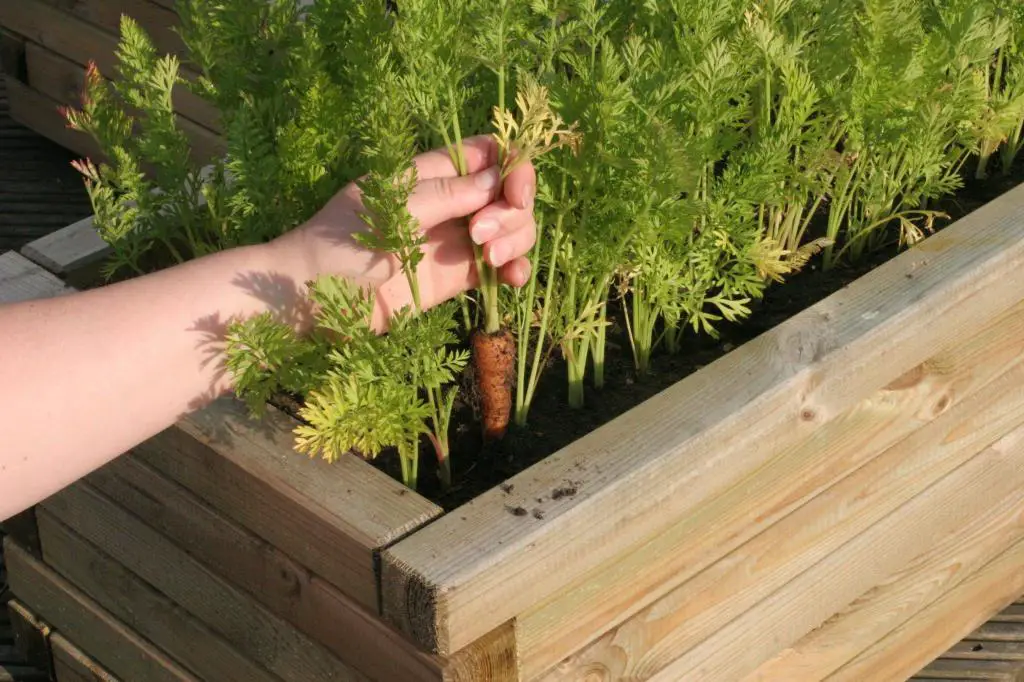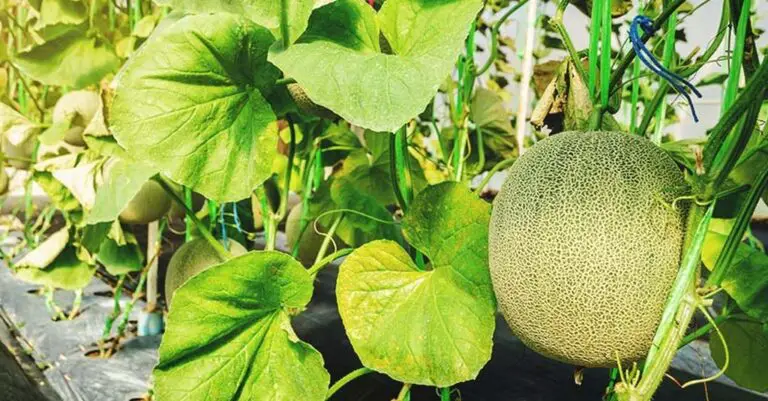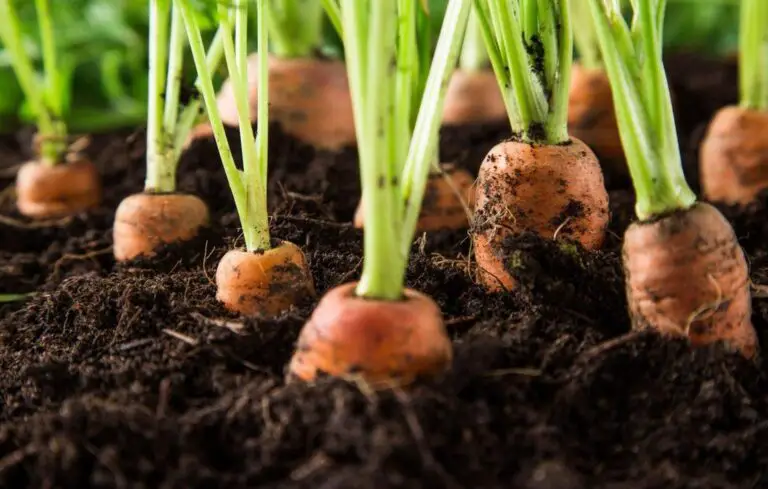Where Do Carrots Grow? Best Place and Ideal Conditions for Planting Carrots

Bring color and nutrition to your garden with a bountiful carrot crop! Growing carrots is easier than you think, but to get the best results, you need to know where to plant them.
If you’re wondering where to find the best place and ideal conditions for growing carrots, this article has all the answers.
From soil type to light requirements, there are many factors that play into a successful carrot harvest. In this post, we’ll delve into the ideal growing conditions for carrots and guide you on the path to a flourishing crop.
Get ready to dig in and discover where carrots can be grown and the best conditions under which they thrive.
Where Do Carrots Grow?
Carrots can be grown in a variety of places, making them a great choice for home gardens and small-scale farming operations.
Carrots can be grown in the ground, in raised beds, or even on patios in containers or tubs. When choosing a location for your carrot patch, it’s important to consider a few key factors. Carrots prefer full sun and well-dug soil that is free of stones. This will help ensure that the roots can grow deep and straight without any impediments. You may also want to add compost to the soil to help improve its fertility and structure.
Carrots grow during the cool season in warm areas like northern Africa, the Middle East, and Australia. They are expanding globally and in the majority of the world’s countries.
INFO![]()
China is the major global producer of carrots, producing 45% of the world’s carrots. Uzbekistan is the second-highest carrot-producing country. Given China’s large production of most popular produce crops, this is not surprising.
Ideal Conditions for Carrots to Grow (Climate, Soil, Rain)
Carrots are a cool-season crop that grows best in a moderate temperature range of about 50–80 °F (10–26 °C). If the temperature rises too high or drops too low, the growth of the carrots can be slowed or stunted.
In addition to temperature, the amount of moisture in the soil is also important for the growth of carrots. To avoid root rot and other problems caused by too much water, the soil should always be moist but not soggy.
Too much heat or cold can also affect the flavor and texture of the carrots. In hot temperatures, the roots may become tough and woody, while carrots in cold temperatures, the growth of the roots can be slowed or stopped completely.
To make sure your carrots grow well, you should choose a spot that is protected from extreme heat and cold and plant them at the right time for your area.
In addition to temperature and moisture, the amount of rainfall and humidity can also have an impact on the growth life cycle of carrots. If rainfall is inadequate, the soil can dry out, and the roots may become tough and stringy. On the other hand, if the humidity is too high, the roots can become diseased and rotten.
Planting Carrots in Raised Beds or In-Ground

When planting carrots, you have the option of choosing between raised beds or in-ground planting.
Raised beds are a great option for those who have poorly drained soil or for those who want to have better control over the soil quality. The soil in raised beds warms up more quickly in the spring, making it easier to plant earlier. On the other hand, in-ground planting is a more traditional approach and is ideal for gardeners who have well-drained soil.
Planting Carrots in Garden or Farm
When planting carrots in a garden or on a farm, there are several considerations to keep in mind.
First, it’s important to choose a location that has well-drained soil and receives full sun exposure. Next, it’s important to amend the soil with compost or other organic matter to improve its structure and fertility. Also, it’s important to pick a type of carrot that grows well in your climate and other growing conditions.
What Countries Grow Carrots?
Here are the top 10 carrot producing countries: China, Uzbekistan, Russia, the United States, Ukraine, Poland, the United Kingdom, Germany, France, Japan, Indonesia, and Turkey
Production in China is spread throughout the country and takes place in Sichuan, Guizhou, Henan, Anhui, Inner Mongolia, Shandong, Fuijan, and Hebei. Different parts of the country harvest carrots at different times, so there are always fresh carrots available. The year-round availability and the good price of Chinese carrots give them a central role in the global carrot market.
Uzbekistan gained independence in 1991. During the country’s transition, there was a rough patch when farmers had to rely on government-run programs for their carrots seed and distribution markets. Since then, Uzbekistan has become a significant global player in various agricultural crops.
What States in the US Grow Carrots?
California produces about 85% of the carrots grown in the US. The Agricultural Marketing Resource Center (AgMRC) says that Michigan and Texas are two other states that are known for their carrot production. Almost all of the carrots grown in the United States are eaten there. Only about 6% are sent to other countries.
In all, there are around 35 states that grow carrots commercially. This data from the 2016 agriculture census is a little out of date, but it still gives an idea of which states grow carrots.
California produces carrots all year round, with their lowest production coming in September, October, and November. The state has four main production areas for carrots: the San Joaquin and Cuyama Valleys, the southern desert (Imperial and Riverside Counties), the high desert (Los Angeles County), and the central coast (Monterey County).
The desire for uniform carrots with a dark orange color has led most commercial growers to grow varieties of Imperial carrots.
Where Do Carrots Come From?
Wild carrots originated in the Middle East. As a wild plant, the carrots were an ivory white color. Domestication of these wild carrots began around the 10th century, and the carrots that people were growing became yellow or purple varieties.
Around the 17th century, the carrot spread east and west and found its way to the Netherlands, the birthplace of the modern orange carrots we eat today. The Dutch found that the orange carrots they produced gave consistent yields and had a good taste. Other farmers and consumers must have thought the same, and the modern-day orange carrot was rocking.
In 2016, the complete genome of the carrot was completed. At the time, it was one of only about 12 vegetables whose entire genome had been sequenced. Through this study, it was found that the modern-day orange carrot came from a yellow carrot variety.
It was also found that the carrot diverged from the grape 113 million years ago and from the kiwi about 103 million years ago.
For a more complete analysis of the history of carrots, check out the online carrot museum.
Where Do Carrots Grow Naturally?
Carrots grew naturally in the wild around the Middle East, northern Africa, mid-southern Europe, and western Asia. They were white or purple in color when growing in the wild.
Wild carrots are still found throughout the Mediterranean region, as well as in Europe, Africa, and Asia. Most of the time, the roots of wild carrots are small and tough, and they are not as sweet as cultivated carrots. However, they are still an important food source for many animals, including rabbits, deer, and birds.
Cultivated carrots are now grown all over the world and can be found in grocery stores and farmers’ markets year-round.
Conclusion
In the end, growing carrots can be a fun and tasty way to add to your garden or farm. To get the best yield, it is important to understand the ideal growing conditions for carrots, including the right soil type and pH, full sun exposure, a moderate temperature range, and consistent moisture.
By finding a location that meets these conditions and planting the carrots at the appropriate time, you can be on your way to a bountiful crop of healthy and flavorful roots. So, choose the perfect spot, get your hands dirty, and enjoy the taste of freshly harvested carrots straight from your own backyard!






